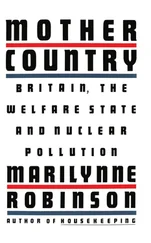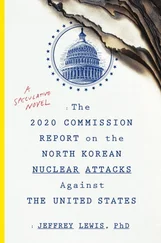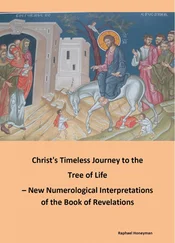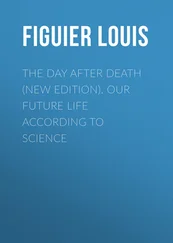Such an approach – the one Bevan eventually adopted – would mean ‘a radical change in the policy of the ministry. Hitherto, we have always worked on the assumption that the Ministry of Health was an advisory, supervisory and subsidising department, but had no direct executive functions.’ And that remarkably prescient sentence foresaw many of the battles to come in the 1980s as the issue of how to manage as opposed to administer the NHS finally reached centre stage.
MacNalty’s was far from the only model being kicked around in the Ministry of Health at the time. Sir Arthur Rucker, who was to become the deputy secretary, argued for yet another option – more of a mixed economy. Joint hospital boards should plan both municipal and voluntary hospital services, he argued, financial support for the voluntary hospitals being dependent on their co-operating and providing agreed services under contract.
As the Ministry of Health pondered, the British Medical Association came back into the game. In August 1940 it set up a Medical Planning Commission of no fewer than seventy-three members drawn from the BMA, the medical Royal Colleges, and the Society of Medical Officers of Health (the local authority chief doctors), along with observers from the health ministries. The Commission’s ‘draft interim report’ emerged in June 1942 as Beveridge was working on his report. Among much else, it again foresaw large regional councils, though loaded with medical representation, running hospitals in which consultants would be salaried. They would choose between being ‘whole-timers’, or part-timers who would retain the right to private practice. For GPs, the commission proposed a mix of basic salary, capitation fees (a fee for each patient on the doctor’s list), and payment for services not covered by capitation. The sale of practices – nominally for ‘goodwill’ – would cease. This report in large measure was drafted by Dr Charles Hill, then the BMA’s deputy secretary but already known to the public as ‘the radio doctor’. The BMA report was remarkable in foreshadowing the way both GPs and consultants would operate in future, although not before a full-blown war had been fought between Bevan and the Association which until the eleventh hour appeared to threaten the very establishment of the NHS.
At the BMA’s annual representative meeting in July, the report received a muted reception. It was, however, not only passed, but the meeting also agreed by ninety-four to ninety-two votes that, while still insurance-based, the scheme should cover the whole community, not just 90 per cent of the population with the remainder forced to continue under private practice. 27The implication of this decision, which the BMA was to restate (though with a qualification) in May 1945 before Bevan’s appointment, were huge, although it appears not to have been entirely recognised at the time. For if 100 per cent of the population could join, family doctors were bound to become dependent on public funds. If the service proved popular with the public, private general practice was bound to wither.
In December, Beveridge delivered his Assumption B: that a comprehensive health service would underpin his social security recommendations. His report caused unease at BMA House, according to Dr Elston Grey-Turner, then a young assistant secretary who went on to become the BMA’s secretary and its official historian. The storm signal, he says, was an aside suggesting that under a national health service, ‘the possible scope of private general practice will be so restricted that it may not appear worthwhile to preserve it’. 28If private practice went, family doctors would become dependent for all their income on the state, whether through local or national government. The spectre of state control, of doctors being civil servants, was raised. As yet, no one was saying when anything would actually happen. But as pressure to implement Beveridge mounted irresistibly, Churchill’s March 1943 broadcast finally allowed plans for a national health service to be drawn up, even if no expenditure could be committed before an election.
Ernest Brown, the leader of the National Liberals and Minister of Health in the coalition government, opened discussions with a tentative suggestion that doctors might be salaried local authority employees. Hill exploded. He warned a mass meeting of doctors to be ready ‘for a fight… [against] the translation of a free profession into a branch of the local government services’. 29In November, Brown was replaced by Henry Willink, and after the best part of a year of consultations, chiefly with the medical profession, the voluntary hospitals and the local authorities, the White Paper A National Health Service emerged in February 1944. 30
Its opening statements were both noble and crystal clear: that everybody ‘irrespective of means, age, sex, or occupation shall have equal opportunity to benefit from the best and most up-to-date medical and allied services available’; that the service should be ‘comprehensive’ for all who wanted it; that it should be ‘free of charge’, and that it should promote good health ‘rather than only the treatment of bad’. It was now certain that a National Health Service, largely tax-financed, free at the point of use, and comprehensive, covering family doctors, dentists, hospital services and more, would arrive. Its precise form, however, remained far from clear. For Willink’s document was a compromise. It proposed some thirty joint boards of grouped local authorities who would take over the municipal hospitals, while Rucker’s suggestion resurfaced that voluntary hospitals should be free to make a contractual relationship with the boards ‘for the performance of agreed services set out in the plan’. Here in the most embryonic of forms was an outline of the internal market that the Conservatives finally introduced into the NHS in 1990.
Family doctors, the White Paper proposed, should be employed by a Central Medical Board, which would have the power to prohibit new doctors practising in over-doctored areas. GPs, who overwhelmingly worked single-handed, would be encouraged to group themselves in health centres provided by local authorities. While the precise methods of payment remained unclear, the White Paper said there was ‘a strong case for salary’ in health centres.
‘Like all compromise proposals designed to reconcile multiple and conflicting objectives, the White Paper left most of the actors involved feeling dissatisfied,’ Rudolf Klein has recorded. 31Local government hospitals had escaped nationalisation, but many local authorities would lose control of their hospitals, while the voluntary hospitals believed they would suffer ‘a mortal blow through the cessation of income from patients’. The GPs had escaped council control and retained the right to private practice (despite strong objections from Clement Attlee during the White Paper’s drafting); but they had no clear form of payment offered save the hint of salaries. 32
The BMA’s council saw in the proposals ‘the thin end of the wedge of a form of service to which it is overwhelmingly opposed – a State-salaried service under local authorities’. 33The British Medical Journal, under its fierce, and fiercely independent, editor Dr Hugh Clegg, warned that if the ideas went through it was hard to see ‘how private practice as we know it today can survive as much more than a shadow of itself’. 34Willink’s White Paper went out to consultation. Well over a year later in June 1945, after Labour had left the coalition government but with the general election still to be held, he proffered a string of further compromises. These were approved by Cabinet and conveyed to the BMA in private, but not made public. The Central Medical Board and its powers disappeared. Health centres were to be experimental. Doctors both in them and outside were to be paid by capitation fees, not salary. Concessions were also offered to the voluntary hospitals. The new joint authorities were to be planning, not executive bodies, and the existing multiplicity of local authorities would retain control over their existing hospitals – a recipe for a dog’s breakfast if ever there was one. John Pater, a Ministry of Health civil servant at the time and future NHS historian, judged it a system ‘of almost unworkable complexity’, one which it was ‘just as well’ did not survive. 35
Читать дальше
![Nicholas Timmins The Five Giants [New Edition]: A Biography of the Welfare State обложка книги](/books/701739/nicholas-timmins-the-five-giants-new-edition-a-cover.webp)











